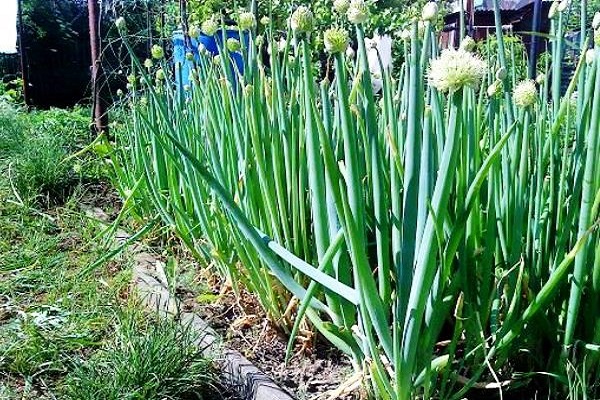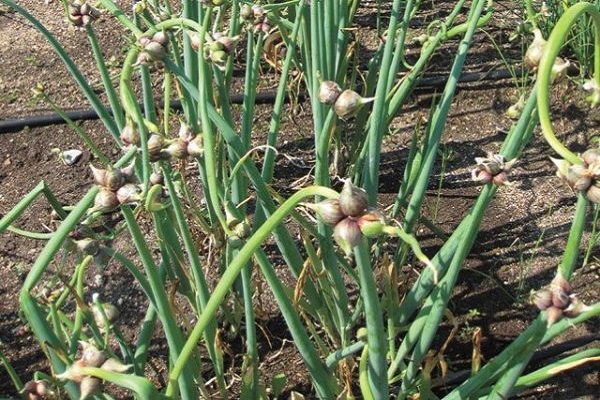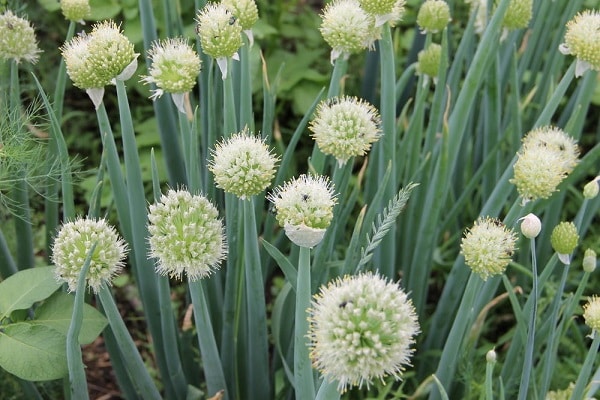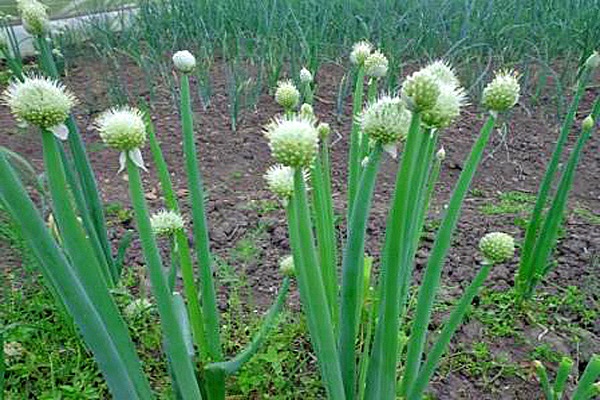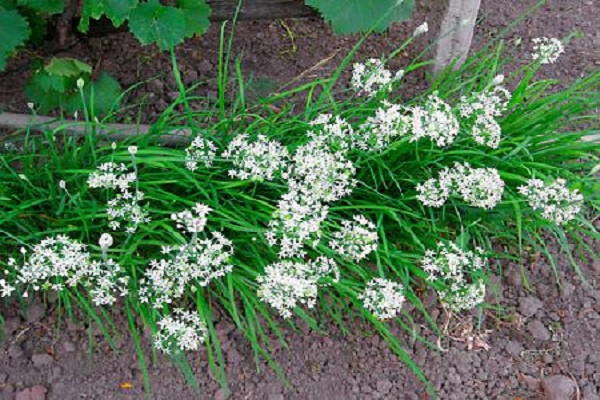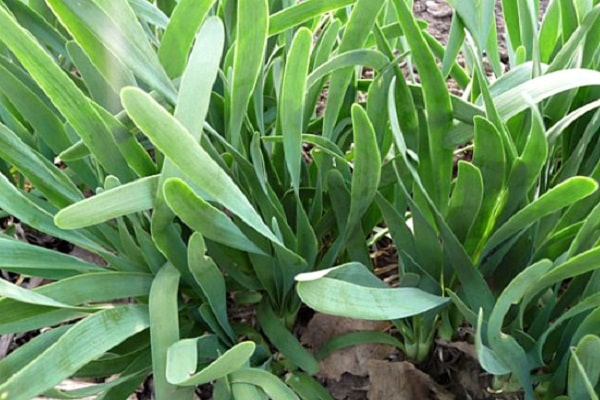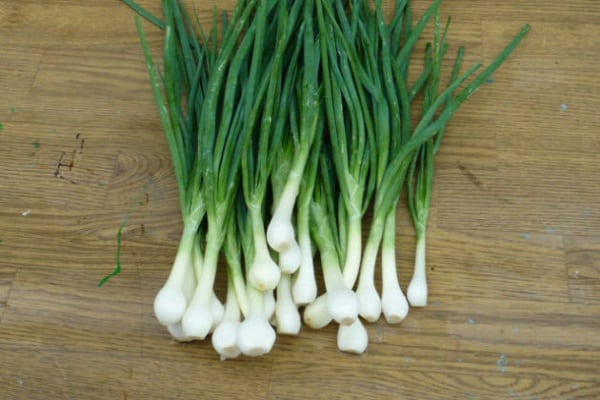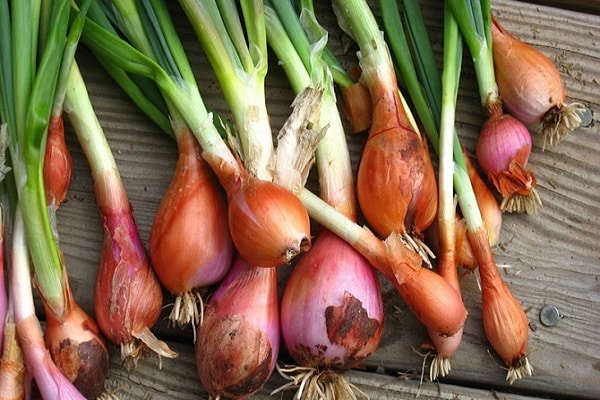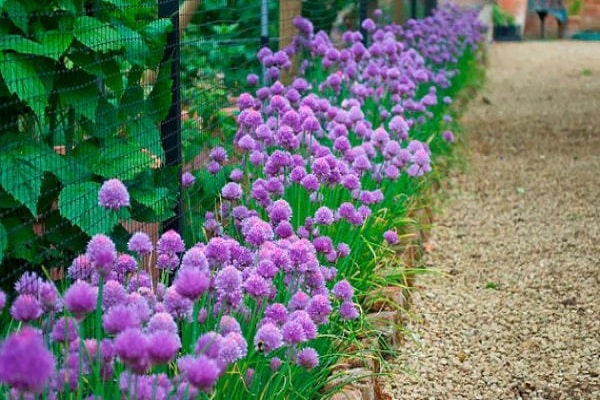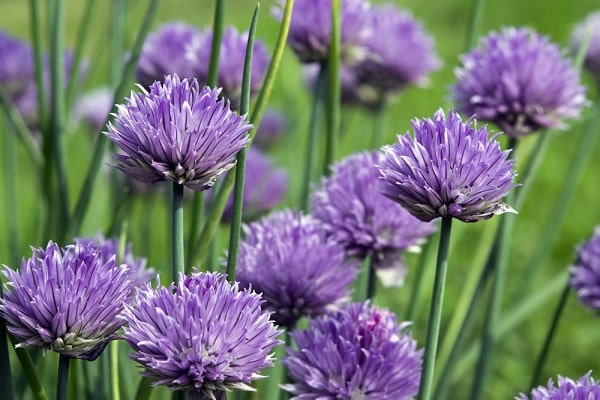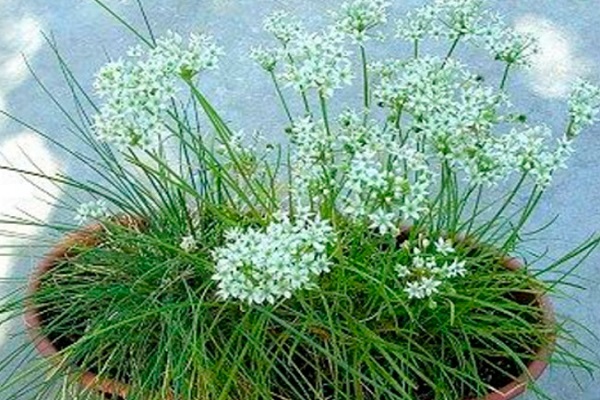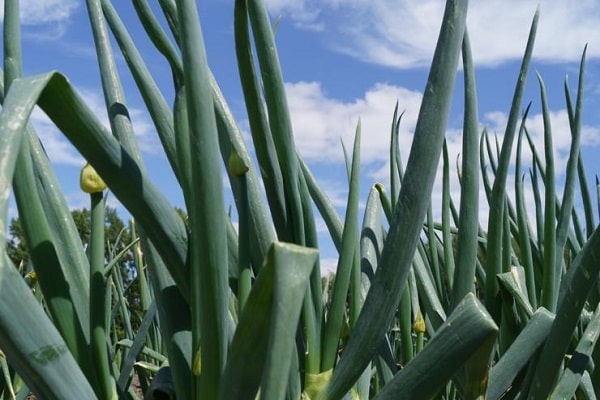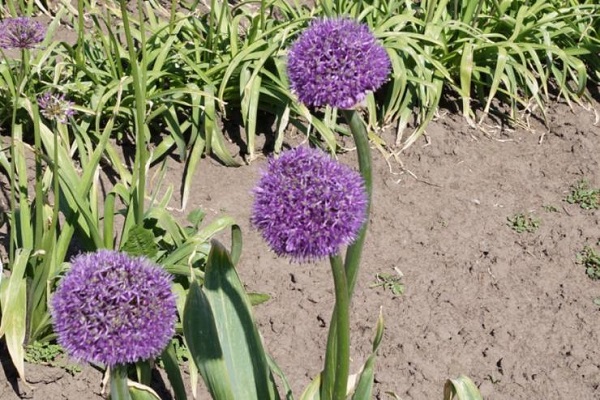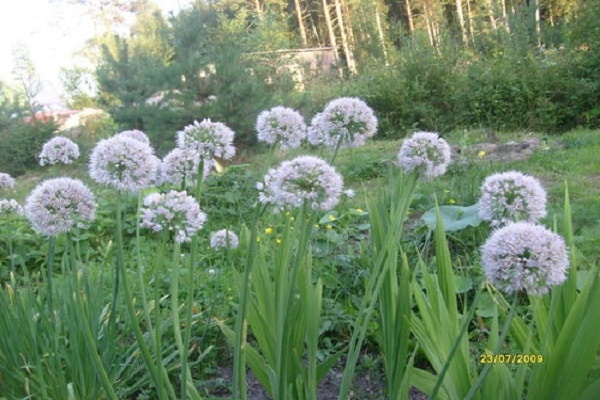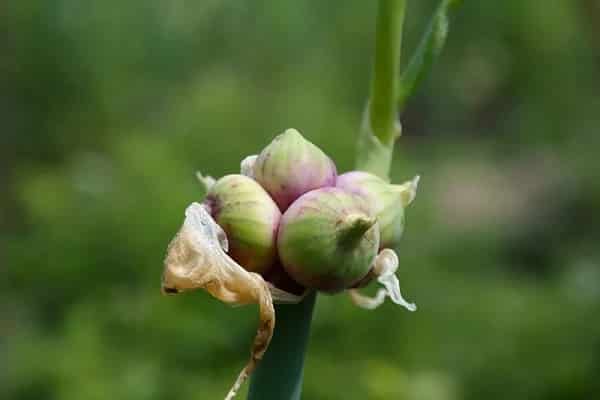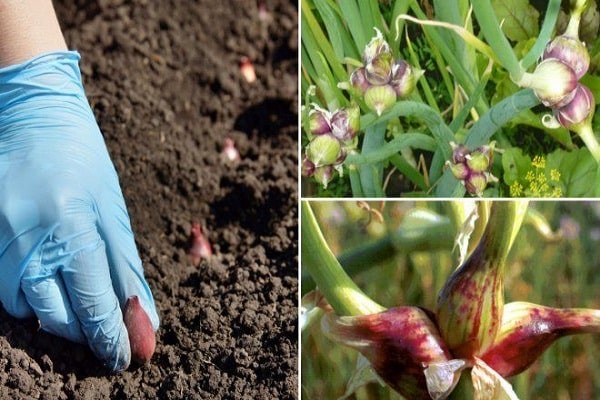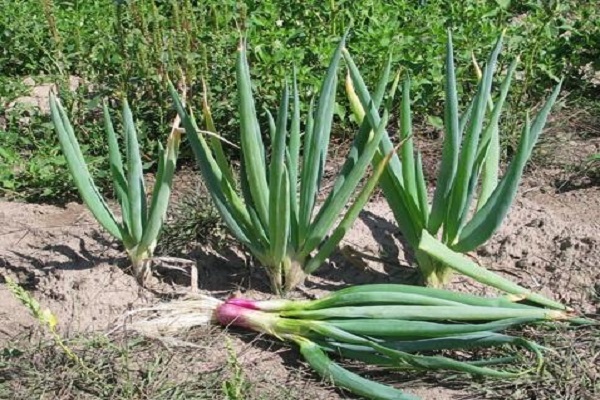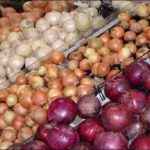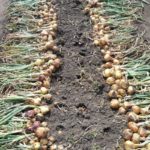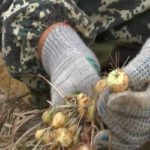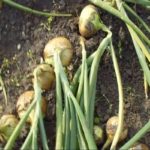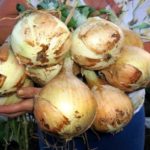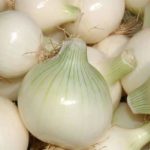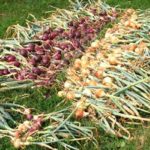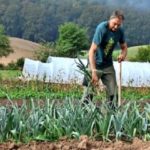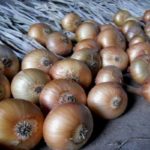There is probably no such summer resident who would not grew onions on a plot of land. In addition to annual varieties, gardeners also grow perennial onions. If you choose the appropriate type of vegetable and follow the rules of cultivation and care, you can provide your family with not only tasty bulbs, but also herbs for the season. In addition, this activity does not take much effort and time.
Properties of culture
There are a huge number of varieties of green onions. They differ in taste, appearance, ripening period and cultivation characteristics.Each variety description has its own nuances that must be adhered to in order to get a good harvest. Due to their attractive appearance, onions are often grown as an ornamental plant. Gardeners value onions because of their ability to ripen early.
The plant contains amino acids and vitamins that the human body needs. The main purpose of planting green onions is to obtain greenery. Onions improve digestion, have a positive effect on metabolic processes and increase the protective properties of the immune system. The vegetable lowers cholesterol levels and removes toxins from the body.
Characteristic
Perennial onion varieties are distinguished by their ability to tolerate low temperatures. Due to this, it is grown in regions where temperatures can drop to -40 °C. The plant is practically not exposed to parasites and is resistant to many diseases. Regardless of repeated cutting, the crop continues to produce crops for 4–6 years.
Onions form a false bulb, which, under good climate conditions, continues to produce new green feathers. A short dormant period makes it possible to plant onions in protected ground or indoors.
Popular varieties
Knowing about the advantages of the crop, no one will refuse to grow perennial onions. Greens that appear in early spring are rich in vitamin C, which the body needs after the winter period. There are more than 500 species of onions that used to grow exclusively in the wild. Today, the vegetable is successfully grown by people. Any variety of perennial onion takes root on a plot of land without any problems.
Batun
One of the most common types of perennial onions. Popularly it has a name onion or Tatar.The benefits lie in the components included:
- riboflavin;
- vitamin C;
- potassium;
- magnesium.
Tatarka is not a compact species. The bush tends to grow widely and, at the same time, the greenery bulges in different directions. In appearance, each feather resembles a pipe. It is round along its entire length, and empty inside.
The height of green feathers can reach 60 cm, and the diameter - from 1 to 2 cm. Onions have one unusual feature - propagation using arrows. Their appearance changes the taste of the vegetable. To please your loved ones with dishes with the addition of herbs, it is recommended to cut the flowers when they first appear.
fragrant onion
In appearance, the vegetable is similar to a drooping onion. Its leaves are flat and can grow more than 50 cm in length. Fragrant green onions does not change its taste both at the beginning and at the end of the season, which other species lack. The culture is rich in ascorbic acid, but has low fiber content.
The feathers at the site of the breakdown quickly grow back, so the plant continues to produce greenery until mid-November. Bulbs of this species are not eaten. They are small in size. The bulb is covered with a special shell that helps it survive severe frosts.
Slime
Gardeners often neglect this representative of the onion family. Slime or drooping onion has the ability to germinate quickly. Thanks to this, it can be enjoyed in the first days of May. Green feathers are rich in iron and at the same time have a piquant taste containing garlic notes.
The taste of slime may vary depending on the season. At the beginning of germination it is soft and pleasant. At the end of August, the onion feels stiff. For this reason, many gardeners refused to grow it, and in vain.The garlicky taste of the vegetable helps housewives use it in canning. This is a great alternative to garlic.
Penetrating bow is indicated for people suffering from anemia. Has a high iron content.
Shallot
This variety of perennial onion is grown for the purpose of preparing restaurant dishes. Not only the green part is eaten, but also the bulbs. This type is especially appreciated by chefs working with French cuisine. New feathers quickly grow at the cut site.
Outwardly it is similar to onions, so it is difficult to distinguish them. The difference is that shallots have more feathers than shallots. Free of characteristic pungent odor. Therefore, girls often choose it as an additional ingredient in salad.
Perennial varieties of onions are used as ornamental plants, but this rule does not apply to shallots and it is not a matter of appearance. Not every crop can have a positive effect on a vegetable. If the onion doesn’t like the neighborhood, it will affect its taste - it will completely lose it. This fact is confirmed by people who planted onions with unsuitable crops.
Schnitt
Onions also have other unusual names - skoroda or chive. It is used not only for cooking, but also for decorating the garden. A representative of alliums grows well in open ground, front gardens and on the balcony. A distinctive feature is small flowers that look like balls. The color varies from soft pink to deep purple.
Bulb-like flowers appear in late spring and do not disappear until autumn. Perennial chives are used before obtaining greenery on the land. The bulb, which is underground, is unsuitable for food. It may not be dug up and remains in the soil until the next season.
The feathers reach 45 cm in length. They are about 5 mm in diameter.Shredded green empty tubes can decorate even the most boring dish. With the beginning of flowering, the vegetable changes its taste, begins to age, and the arrows themselves become hard. Therefore, it is better to use it for food in early spring.
Growing a vegetable
If a person decides to grow perennial onions, he needs to decide on the territory. It is important to understand that in the next 6 years, the land will be occupied only by onions. Favorable development of the plant occurs in well-drained and loose soil. It should be neutral and slightly acidic. Excessive moisture harms onions.
Preparing beds for culture begins with the following activities:
- In the fall, the beds are dug up.
- Fertilizers are applied - phosphorus, potassium or manure.
- Weeds are removed in spring.
- Application of nitrogen-based fertilizers.
Growing and care is an important process that should be given due attention in order to get a rich harvest of onion feathers. The land plot should not be in direct sunlight. It's good if it's partial shade. The growing area is protected from spring or autumn flooding.
On average, perennial onion species have a 2-year development cycle. In the first year, the plant pleases with a small rosette with leaves. On the second, flower stalks, fruits and seeds appear. The flowers die off at the end of the season, and the onion develops thanks to the regenerating buds that are in the root system. Transplantation is carried out in two ways: seeds or part of the plant.
Propagation by seeds
As a rule, summer residents place the seed in open ground at the end of winter or early spring. The first sprouts from seeds appear above the soil two weeks after planting. Over the next few months, the onion develops slowly, requiring constant attention.In order not to spend a lot of time on growing, experienced gardeners use the seedling method.
In March, the seeds are placed in prepared boxes with soil. To provoke early emergence of seedlings, planting material is soaked in a solution of potassium permanganate. He must spend at least a day there. Then the seeds dry out.
Seedlings must grow in optimal conditions. Before emergence, the temperature ranges from 20 to 22 °C. If sprouts appear, maintain a temperature of 18–20 °C. Seedlings are planted in open ground in mid-May.
Vegetative method
Onions can reproduce not only by seeds. You don't have to collect seed to grow new crops. Dividing a bush is another effective and easy way to propagate a perennial. Moreover, this option is suitable for any type of vegetable.
The principle of division is simple. To do this, take a bush that has reached 3 years of age and divide it into small bushes. It is best to carry out the procedure in mid-spring or at the end of summer. If a perennial grows on a site for a long time, it is ready to reproduce.
How to grow a full-fledged plant from individual bushes that produces a rich harvest of greenery? To do this, you need to take the separated part with the bulb and place it in the ground to a depth of 8–11 cm. The root system must be developed, otherwise the crop will not take root or will be weak. If, after dividing a large bush, such specimens are present, they are planted to a depth of 5 cm.
Perennial care
Despite its unpretentiousness, the plant needs basic care. The development of the bulb and yield will depend on a person’s interest in this issue.
Watering
Perennials like to grow in moist soil. At the same time, there should be no water standing in the bushes.Excess liquid provokes root rot and damage to the crop. Periodic watering is recommended, which is done after each appearance of a new feather.
Fertilizer application
Varieties of perennial onions like periodic feeding. In the fall, potassium and phosphorus are added, which allows the bushes to survive the winter well. After collecting the last feathers, the soil is enriched with nitrogen. In the fall, apply any other fertilizers.
Attention to the soil
Perennial onions do not tolerate proximity to other crops, in particular weeds. A person must prepare for numerous weeding of beds with greens. During the season, the soil can be loosened. Small pests are not so dangerous, but they should also be gotten rid of.
A competent approach to choosing a variety of perennial onions allows you to provide the gardener’s family with vitamins for the whole season. Successful ones are those that do not require careful care, are resistant to disease and produce a stable harvest. If you eat vegetables regularly, you can increase the protective properties of the immune system.

